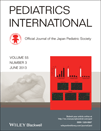Comparative effects of respiratory stimulants on hypoxic neuronal cell injury in SH-SY5Y cells and in hippocampal slice cultures from rat pups
Abstract
Background
This study was conducted to clarify whether respiratory stimulants used to treat apnea of prematurity (AOP) attenuate or aggravate hypoxia-induced neuronal damage.
Methods
A human neuroblastoma cell line, SH-SY5Y cells, and hippocampal slice cultures from rat pups were exposed to hypoxia to induce cell injury. The effects of respiratory stimulants on cell injury were evaluated.
Results
Theophylline and doxapram did not have any effects against cell injury induced by hypoxia in SH-SY5Y cells and hippocampal slice cultures of rat pups, while caffeine protected these cells and the slice cultures from hypoxia. The protective effects of caffeine in SH-SY5Y cells disappeared with co-treatment by the adenosine A2A receptor agonist, CGS21680, and were mimicked by the adenosine A2AR antagonist, SCH58261. Meanwhile, co-treatment with phosphatidylinositol 3-kinase/AKT pathway inhibitors did not affect the protective effects of caffeine. Hydroxy radical scavenging activity of caffeine were not observed at the concentrations that produced cytoprotective activity, and radical scavengers did not have any effects on the cell injury induced by hypoxia in SH-SY5Y cells.
Conclusions
Caffeine significantly attenuated cell injury induced by hypoxia in SH-SY5Y cells and hippocampal slice cultures of rat pups, at least partly through A2AR antagonism. Caffeine can protect neuronal cells from injury induced by hypoxemia, and may be a beneficial treatment for AOP with neuroprotective potential.




